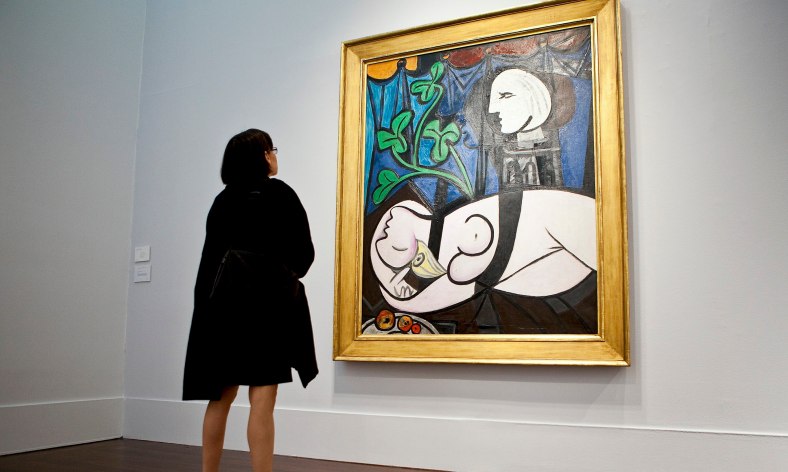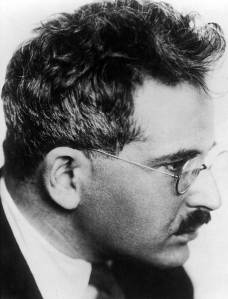
Photo from the art blog of The Guardian
Our gaze must strike the object in such a way that it awakens something within it that springs up to meet the intention....The intensive observer finds that something leaps out at him from the object, enters into him, takes possession of him....This language of the intentionless truth (that is to say, of the object itself) possesses authority....It leaps into existence as the result of an immersion of the object in itself provoked by the external gaze.~ Walter Benjamin
But how does the work of art become suspended in a sleep of latency to begin with? I suggest that the act of creation imparts to the artwork, as if by osmosis, a tendency to sequestration, a tendency similar to the riddling, metaphysical hiddenness of consciousness itself. As such, a work of art opens up a space of self-concealment -- a space parallel, tangent, and complementary to the artist's consciousness. This sideways volume of being involves an aesthetic strangeness that is cut off from the conventional, from normality. The artist's imagination, operating under the influence of eccentric time, infuses the artwork with that eccentric time. The artwork thus exists off-world, so to speak, concealed or suspended in a different dimension.
But what is involved with the special gaze of Benjamin's "intensive observer?" How does one generate that intensity, so the work of art is awakened from suspended animation?
I think the special angle of looking has to do with the opposite of a conquering, appropriating, analyzing gaze. The aggressive stare frightens an artwork, keeps it from coming to presence, holds it in a cloistered condition. The more dominating the gaze, the farther the artwork retreats into itself. I'm sure you've read descriptions of artworks written by experts in exhibition catalogs. To me, those sophisticated folks are blinded by their own analytical gazing. The artwork becomes a mirror reflecting conventional attitudes, hand-me-down assessments, and historical fixations. Institutional formalism should, I think, be left at the gallery door before entering; it interferes with the "leap" of an artwork's off-world authority into the observer's consciousness.
The genuine activating gaze, that intensive seeing must have instead something to do with naivete, with an emptying-out of preconception and knowingness, with a filling-in of tense wonder. That special way of looking then causes the artwork to stir from its metaphysical shadows, to show itself within its eccentric zone of the tangential.
Benjamin is that "aura" guy. I suspect that the awakening, the activating of an artwork takes place only in the presence of the original. A reproduction is latent with only a semblance of eccentric time, with only an ostensible possibility of engagement. Drained of aura and pulsating presence, the work of art as reproduction can only dimly divulge its secrets to the intensive gaze.

Walter Benjamin, 1892 - 1940



"...the special angle of looking" -- needful writing.
ReplyDeleteThank you!
Delete